 Many issues that people experience with their feet are caused or made worse by ill-fitting shoes. Bunions, hammer toes, claw toes, corns, calluses and neuromas are all forefoot problems that are related to wearing shoes that are too narrow, often with pointy toe boxes and higher heels. Studies have shown that many women wear shoes that are too small and the majority of people over the age of 65 wear shoes that are too narrow. 90% of surgeries done for these deformities occur in women. The incidence of these procedures peak when people are in their 30’s to 50’s indicating that it is the repetitive use of ill-fitting shoes over time that causes the problems.
Many issues that people experience with their feet are caused or made worse by ill-fitting shoes. Bunions, hammer toes, claw toes, corns, calluses and neuromas are all forefoot problems that are related to wearing shoes that are too narrow, often with pointy toe boxes and higher heels. Studies have shown that many women wear shoes that are too small and the majority of people over the age of 65 wear shoes that are too narrow. 90% of surgeries done for these deformities occur in women. The incidence of these procedures peak when people are in their 30’s to 50’s indicating that it is the repetitive use of ill-fitting shoes over time that causes the problems.
When looking for healthy shoes remember to look for:
- Low heels- the higher the heel the more pressure is concentrated on the front of your foot when you walk
- Toe boxes that match the shape of your foot, are roomy and do not have seams over painful areas
- Shoes made of a soft material that breathes and molds – leather and microfiber are excellent choices
- Shock absorbing skid resistant soles for safety and comfort
- Cushioning for support and padding
Tips for trying on shoes for a good fit:
- Judge on fit not size- choose the shoe that feels best regardless of the size on the box.
- Shoes should feel good in the store, you shouldn’t need to break them in
- Our feet get larger as we age and one foot is usually larger than the other – have both feet measured and then fit the larger foot
- Shop for shoes at the end of the day when your feet are often a bit swollen – if they feel comfortable then they will usually be comfortable all day
- Stand and walk on an uncarpeted area when trying on shoes
- The ball of the foot should fit comfortably in the widest part of the shoe
- Your heel should not slip out of the shoe when you walk
- There should be 3/8 -1/2” from your longest toe to the shoe tip
